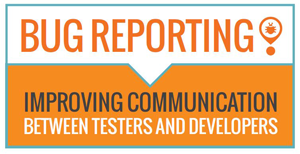 One approach that we take to software quality assurance testing is the preparation of extensive manual test cases (sometimes called test scripts, although this gets easily confused with test automation). We don’t always employ test cases of this level – they take considerable time to create and maintain as well as to execute, and projects with aggressive schedules don’t always allow for this. They’re also overkill for many smaller and more straightforward projects, such as informational web pages.
One approach that we take to software quality assurance testing is the preparation of extensive manual test cases (sometimes called test scripts, although this gets easily confused with test automation). We don’t always employ test cases of this level – they take considerable time to create and maintain as well as to execute, and projects with aggressive schedules don’t always allow for this. They’re also overkill for many smaller and more straightforward projects, such as informational web pages.
We find that manual functionality test cases are most applicable to projects that:
- Expect to undergo regular, formalized testing
- Have certification requirements that require formal verification
- Have extensive features & supporting documentation
- Expect to convert to test automation at a later date
As an example, this Google Doc shows a sample of a subset of test cases completed for an (older) mobile app with a custom hardware device tie-in. The original test cases span 15 separate tabs and are too extensive to sanitize; the sample is only two tabs, plus supporting documentation, and has been lightly sanitized to maintain confidentiality.
While the sample is a cloud document (and we’re fond of Google Docs as a tool), we quite often utilize other formats for creating and delivering completed test cases. Microsoft Excel is quite popular on many of our projects and Word (or any decent word processor) is also useful, especially if image embeds are needed.
Test cases at this level of detail are excellent for documenting feature coverage and can even be broken down to accommodate testing of specific features/changes rather than being completely re-run each time. They are also an excellent starting point for eventual automation efforts, since they document specific tests in detail.
These test cases, as mentioned, require time to create and an investment to keep them up-to-date. They are also time consuming to execute and are fairly linear in their coverage. They work well when coupled with exploratory testing, particularly across various supported configurations (web browsers, mobile devices, operating systems, etc.).
As always, feel free to contact us if you have any questions or would like to discuss having us contribute to your application test plan writing or quality assurance efforts.

 With Experience in Quality Assurance & Testing Desktop Software, Mobile Apps, Websites & Web Applications for Nearly 30 Years, Beta Breakers has become the Premier Software Quality Assurance Labs and Application-Testing Provider -
With Experience in Quality Assurance & Testing Desktop Software, Mobile Apps, Websites & Web Applications for Nearly 30 Years, Beta Breakers has become the Premier Software Quality Assurance Labs and Application-Testing Provider - 


Leave a Reply